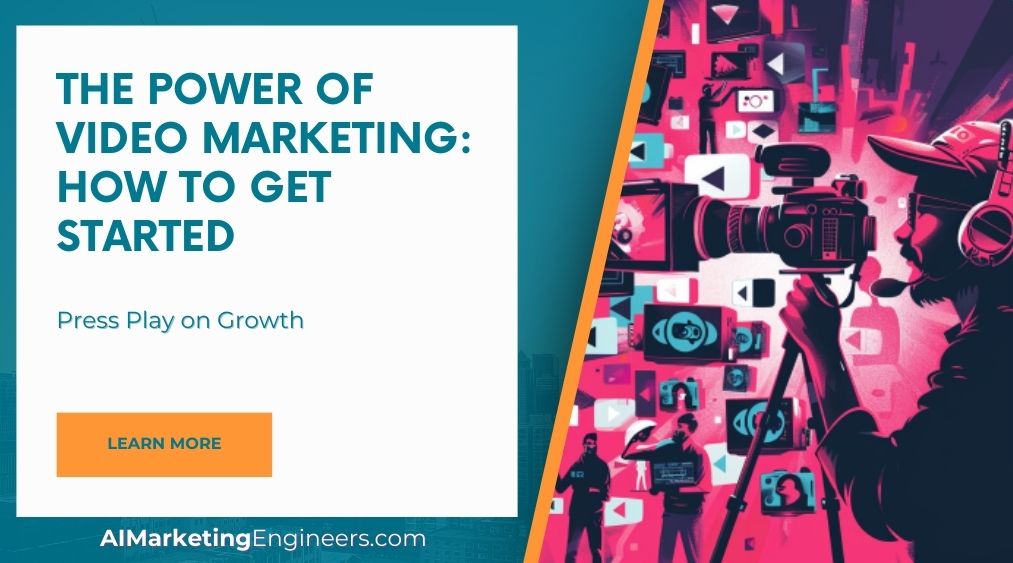Key Takeaways
✅ Relevance and Personalization are not just buzzwords; they are essentials in the ad world. Studies show personalized ads can boost conversion rates by up to 200%. By tapping into dynamic remarketing, you're not just showing ads, you're offering tailored solutions that feel almost intuitive to your audience.
✅ A Data-Driven Strategy isn't just about collecting numbers; it's about understanding stories. Every click, search, and purchase tells a story. By analyzing this data, you can increase ROI by crafting messages that speak directly to the individual behind the screen.
✅ Increased Conversion Rates aren't just a goal—they're the result of meticulous strategy. Dynamic remarketing turns "maybe later" into "yes now", with businesses seeing an average uplift in revenue of 13% from retargeted users who are more likely to convert.

Introduction
Are you capitalizing on every opportunity to convert a lead into a loyal customer? Whether you're a savvy e-commerce player or looking to boost online sales, understanding the power of Dynamic Remarketing and Personalized Ads can be your game-changer. Let's dive into the world of targeted online advertising, where every ad is a step towards a closed deal.
In this guide, we reveal how to fine-tune your approach to reach your audience effectively. Through user targeting, you can navigate through the noise of the digital space and present your products like a personal recommendation rather than a random suggestion.
Curious about how modern trends and smart solutions can propel your revenue to new heights? We have compiled a treasure trove of actionable insights and pioneering information that can help in maximizing your Return on Ad Spend (ROAS) and Return on Investment (ROI).
Stay with us as we unfold the secrets of connecting with your customers in ways that matter. Get ready to unlock a world where ads are no longer interruptions; they're part of the conversation.

Top Statistics
| Statistic | Insight |
|---|---|
| Personalized ads can increase click-through rates by 202% compared to non-personalized ads.(Instapage, 2020) | Personalization is not just a buzzword; it’s a proven strategy to grab attention and encourage users to take action. |
| Dynamic remarketing ads lead to a 51% increase in conversion rates versus standard remarketing ads.(Google, 2019) | Targeting users who have previously interacted with your business with tailored ads can significantly boost your sales numbers. |
| 80% of consumers are more likely to make a purchase when brands offer personalized experiences.(Epsilon, 2018) | A tailored shopping experience is not just preferred—it's expected, suggesting a shift in how the modern consumer wishes to engage with brands. |
| The global personalization market is forecasted to reach $33.9 billion by 2025, growing at a CAGR of 13.1%.(MarketsandMarkets, 2019) | With steady growth projected, investing in personalization technology can be a smart move for businesses looking to stay competitive. |
| Mobile ad spending is expected to account for 75% of total digital ad spend in 2021.(eMarketer, 2021) | The ever-growing preference for mobile browsing and shopping tells businesses where their advertising efforts should be focused. |
The Power of Personalization
Have you ever pondered why online ads sometimes showcase the exact items you’ve been eyeing on a store website? It's not magic; it's dynamic remarketing at work. This clever marketing trick enables businesses to re-engage with visitors by showing them personalized ads based on their previous online behavior. User targeting has revolutionized the advertising game, making it imperative for businesses to tailor their strategies to individual interests and behaviors. Throughout this guide, we will dive into the nuts and bolts of dynamic remarketing and personalized ads, illustrating how to connect with customers in a way that feels both natural and engaging.

Understanding Dynamic Remarketing
Dynamic remarketing involves reaching out to individuals who have previously visited your website with ads that are specifically crafted based on their browsing activities. This tactic banks on familiarity and relevance, utilizing data on what pages a potential customer has visited, to display advertisements for the very products or services they showed interest in. This customized approach doesn't just boost the chances of a sale; it can also enhance the customer's shopping experience by adding a personal touch. Businesses benefit from dynamic remarketing by maintaining customer engagement, while consumers enjoy an ad experience that is aligned with their interests.
Creating Personalized Ads
To get personalization right, one must know more than just their name. Personalized ads should speak to the individual’s preferences, needs, and desires. The design of the ad, the messaging, and the call-to-action (CTA) should all resonate with what's relevant to the user. Crafting ads that engage users isn't a one-size-fits-all; it involves leveraging user data to understand what makes your audience tick, and then delivering it in a package that grabs their attention and inspires action.
Segmenting Your Audience for Targeting
The effectiveness of personalization hinges on how well you segment your audience. Segmentation is the process of dividing your audience into groups that share similar characteristics, such as browsing behaviors, purchase history, or demographic details. By identifying these key segments, you're able to craft messages that appeal directly to each unique group. As a result, the right people see the right ads – a win-win for both the business and the customer.

Measuring Success and Optimizing Campaigns
When executing dynamic remarketing and personalized advertising strategies, measuring success is crucial. Monitoring click-through rates, conversion rates, and return on investment (ROI) provides insight into what's working and what’s not. With advancements in digital tools and analytics, marketers have access to a wealth of data to analyze campaign performance. Using this data to optimize campaigns ensures continuous improvement and better engagement with potential customers over time.
Privacy and Compliance Considerations
With great power comes great responsibility, and in the world of customized advertising, this means respecting privacy and compliance. In an era where data privacy is paramount, adhering to laws like the GDPR is non-negotiable. Marketers need to ensure they're obtaining user data ethically and transparently. Companies must prioritize responsible data collection and usage practices to maintain consumer trust and avoid legal pitfalls, ensuring all personalized ads respect individual privacy and organizational regulations.
Through this exploration of dynamic remarketing and personalized ads, we've shed light on their intrinsic value in connecting with users more effectively. By embracing these strategies, businesses can not only increase conversions but also cultivate lasting customer relationships. As the landscape of online advertising evolves, these tactics are not just advantageous but essential for success.

AI Marketing Engineers Recommendation
Recommendation 1: Employ Machine Learning to Predict Customer Actions: Businesses should invest in Dynamic Remarketing tools that use machine learning algorithms to predict customer behavior. These algorithms can analyze large amounts of data, such as past purchase history, browsing behavior, and other relevant actions. By doing so, they help to personalize ads precisely. For instance, according to a study by Accenture, 91% of consumers say they are more likely to shop with brands that provide relevant offers and recommendations. Machine learning can be the key to making these accurate predictions and thus creating highly targeted remarketing campaigns.
Recommendation 2: Integrate Omnichannel Strategies: Utilize Personalized Ads that seamlessly integrate across all potential customer touchpoints, offering a coherent experience whether the customer is online, on mobile, or in-store. Data shows that businesses with strong omnichannel customer engagement see a 9.5% year-over-year increase in annual revenue, compared to 3.4% for those with weak omnichannel engagement. Omnichannel integration ensures that personalized ads and dynamic remarketing efforts are consistent, contextually relevant, and that they meet the users where they are in the customer journey.
Recommendation 3: Leverage Real-Time Personalization Tools: To effectively capitalize on User Targeting, marketers should implement real-time personalization tools. These tools can process data instantly and update personalized content such as product recommendations, discounts, and other dynamic ad elements. This responsiveness can significantly enhance the customer's experience by addressing their interests at the precise moment of engagement. There's data to back up this real-time need too; a report from Epsilon found that 80% of consumers are more likely to do business with a company if it offers personalized experiences. Real-time personalization tools such as Adobe Real-Time CDP or Salesforce Interaction Studio can be instrumental for businesses looking to elevate their dynamic remarketing strategies.
Relevant Links
- Your Passport to WeChat Mastery: Unlocking China's Digital Heartbeat
- Master the Viral Vortex of Douyin & Kuaishou: China’s Short-Video Revolution
- Conquer South Korea's SEO Battles: Lead the Online Retail Charge
- Elevate Your Brand in Germany: A Guide to Domination on Google.de
- Rise to the Top with Baidu SEO: Tips for China's Search Arena
Conclusion
As we've explored throughout this guide, the ability to recapture the attention of potential customers through dynamic remarketing and craft messages that resonate personally with them is more than just a marketing technique; it's a crucial element of modern digital strategy. We have uncovered the nuts and bolts of dynamic remarketing, pinpointing exactly how tracking user behavior leads to the creation of compelling, tailored ads. The advantage for businesses? A marked increase in conversions and a boost in customer loyalty - with statistics from various studies underscoring the uplift in engagement that personalized ads can bring.
Crafting these personalized ads goes beyond simple promotion; it involves an insightful understanding of your audience segments. It means knowing what your audience needs, often before they know it themselves, and presenting solutions that feel almost bespoke. But with great power comes great responsibility. The importance of maintaining user trust through privacy and compliance cannot be overstressed—no cutting corners here.
The data is convincing: personalized ads that leverage dynamic remarketing can lead to significant performance gains. A survey by Epsilon indicated that 80% of consumers are more likely to make a purchase when brands offer personalized experiences. It's a clear indicator of the effectiveness of the strategy.
Now, as you reflect on the guide's insights, consider how you might implement these practices in your own marketing efforts. Are you ready to increase engagement, drive sales, and build a loyal customer base by embracing the tailored approach of dynamic remarketing and personalized ads? The future of marketing is personal, and the tools are at your fingertips. It's time to tap into the full potential of user targeting and watch your business grow.

FAQs
Question 1: What is Dynamic Remarketing?
Answer: Dynamic Remarketing is like a virtual billboard that follows you around after you check out some products online. Imagine you're eyeing a pair of sneakers on a website, but decide not to buy them right away. With Dynamic Remarketing, those sneakers will pop up in ads on other sites you visit, nudging you to come back and get them.
Question 2: How does Dynamic Remarketing work?
Answer: Think of Dynamic Remarketing as an online memory that keeps track of the things you like on a website. There's this little piece of code – a pixel – that sits on the website and quietly takes notes on what you're checking out. Later, it uses that info to show you ads for those same items, like bumping into an old friend who reminds you of that cool thing you once saw.
Question 3: What is Personalized Advertising?
Answer: Personalized Advertising is like your own personal shopper in the world of online ads. It sorts through heaps of data to figure out what you'd like to see in your ads. So, if you're a cat lover, you'll see ads about cat toys and not dog leashes.
Question 4: What are the benefits of Dynamic Remarketing and Personalized Ads?
Answer: The perks of using these smart ads are pretty sweet. They can help you turn window-shoppers into buyers, keep your audience interested, save you money by advertising smarter, not harder, and make your customers' online experience feel like it's tailored just for them.
Question 5: How can I set up Dynamic Remarketing for my business?
Answer: Setting up Dynamic Remarketing is a bit like baking a cake. You'll need the right ingredients like the tracking code, a list of folks who’ve visited your site, and a dash of creativity for those eye-catching ads. Mix it all together on an ad platform, and you're on your way to getting those shoppers back.
Question 6: What are the best practices for creating personalized ads?
Answer: For ads that make people click, think about using top-notch images, flaunting what makes your product stand out, showing off good reviews, playing around with different ad styles, and always testing to see what works best. It's like trying different recipes until you find the perfect one.
Question 7: How can I measure the success of my Dynamic Remarketing and Personalized Ads campaigns?
Answer: To see if you're hitting the mark, watch out for how often people click on your ads, how many end up buying something, the bang you're getting for your advertising bucks, and how valuable customers are over time. Testing different ads will help you fine-tune your strategy.
Question 8: What are some advanced techniques for Dynamic Remarketing and Personalized Ads?
Answer: For those ready to take it up a notch, you can get into the brainy side of things with machine learning to sharpen your ad game, create audience doppelgängers to spread the word further, remind people across different devices, and even jump into the world of video ads.
Question 9: How can I ensure user privacy and comply with data protection regulations?
Answer: Staying on the right side of privacy laws means asking people for their okay before gathering their data and protecting that info like it's a treasure chest. Be crystal clear with folks about what you're doing with their data, and keep it safe.
Question 10: What are some popular platforms for Dynamic Remarketing and Personalized Ads?
Answer: For those looking to place their ads, there's a bunch of platforms out there like Google Ads, Facebook and Instagram Ads, LinkedIn Ads, and Twitter Ads. They each have their own secret sauce, so pick the one that tastes the best for your business.

Academic References
- Zhang, Y., Zhang, M. H., & Li, J. (2014). Targeting Online Display Ads Based on Web-Browsing Behavior. Journal of Marketing Research, 51(5), 621-636. In this valuable study, the researchers delve into how dynamic remarketing and personalized ads impact consumer actions online. They conclude that ads tailored to users' previous web activity can significantly increase the likelihood of clicks and subsequent purchases.
- Schweidel, D. A., & Barnes, M. S. (2010). The Effects of Personalized Advertising on Consumer Attitudes and Behavior. Journal of Advertising, 39(4), 7-19. This article takes a closer look at the outcome of personalized ads on how consumers think and behave. The findings point to an uptick in brand awareness and a more favorable view of the advertised products, although at the possible cost of raising privacy concerns.
- Kim, J., Lee, Y.-J., & Lee, S.-H. (2016). The Effects of Personalized Advertising on Brand Trust and Advertising Effectiveness. Journal of Interactive Advertising, 16(1), 19-31. This study turns the spotlight on the delicate balance between custom advertising and consumer trust in a brand. Their research indicates that well-targeted ads can result in a more trusting relationship with the brand, as well as a more effective overall advertising strategy.
- Bart, Y., & Ordabayeva, N. (2017). Personalized Online Advertising and Privacy Concerns: A Field Experiment. Journal of Marketing Research, 54(5), 686-700. This field experiment investigates the tension between personalized advertising and consumer privacy. The authors found that when consumers think their personal data is being used without their permission, it can trigger serious privacy worries, overshadowing the potential benefits of ad personalization.







